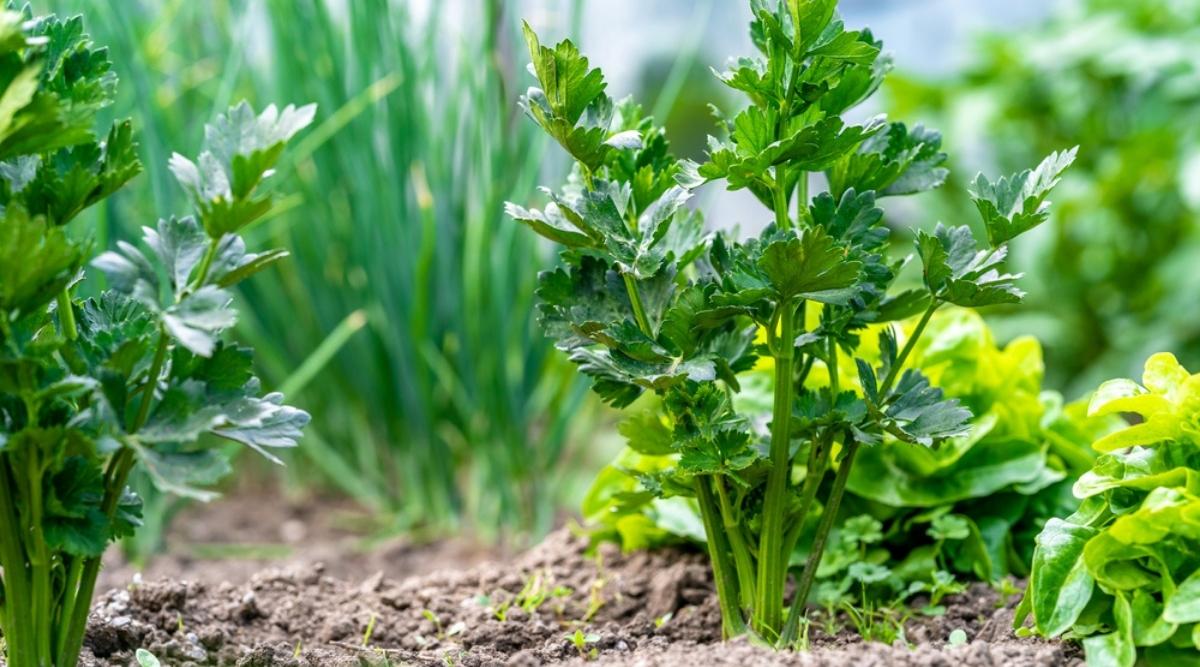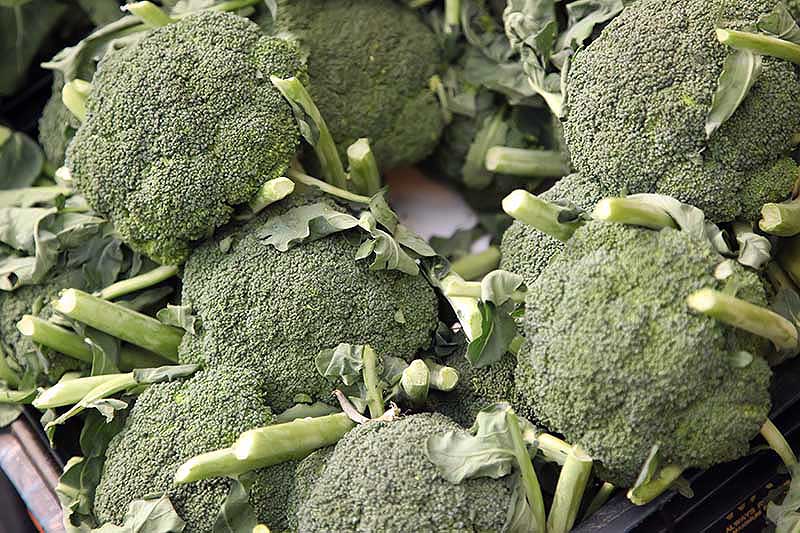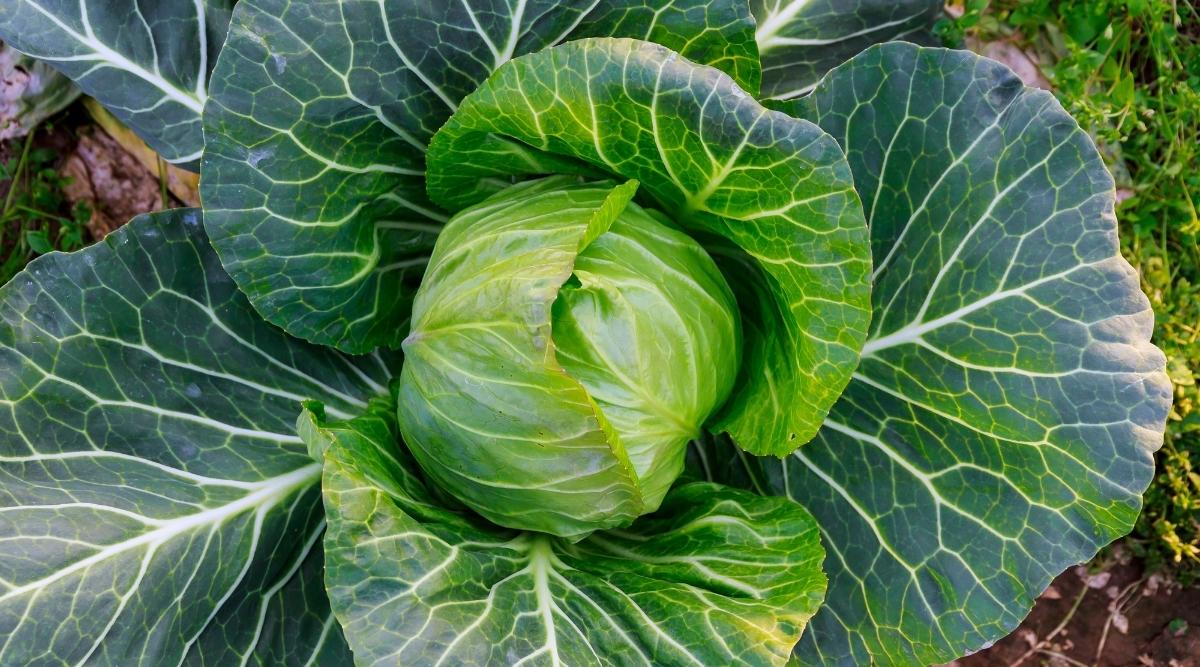How to Grow and Care for Aubergine Plants
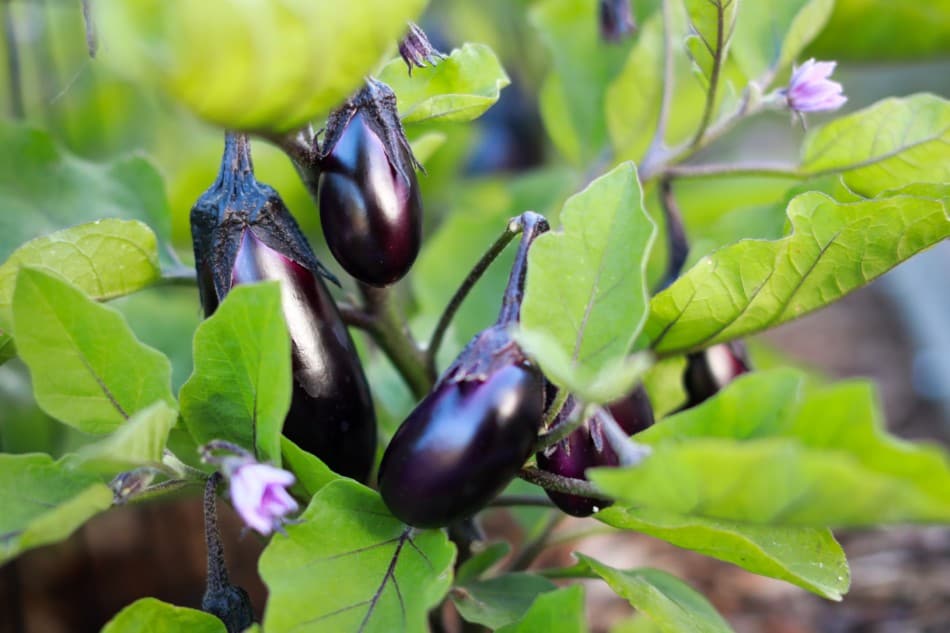
Table of Contents
Are you looking for an interesting plant that can enhance the beauty of your garden? Then consider growing the aubergine plant. Aubergine plants, also commonly referred to as eggplants, are tender perennials that need abundant warmth and sunlight to grow.
Aubergines can be grown on a patio, in a greenhouse, or in any sunny spot in the garden. You can grow them from seeds, or you can bring in young aubergines and replant them in your garden. Aubergines are members of the genus Solanum.
These plants bear beautiful mauve, purple, red, pink, or white fruits that are usually egg-shaped. The fruits can also be round or thin and long.
If the growing conditions are ideal, these plants will bear 7-8 fruits by the end of summer. These fruits are closely related to peppers and tomatoes and require similar growing conditions.
Things to Consider While Growing Aubergine Plants
We have listed a few things that you need to consider to grow aubergine plants and get abundant yields successfully.
1. Sunlight

Aubergine plants need at least 6 hours of direct sunlight every day. The more sunlight they get, the better. Even 8 hours of sunlight on a regular basis is great for these plants. These plants love the direct sun and high temperatures. Too little sunlight can cause a number of problems for aubergine plants. Aubergine plants belong to the same family as peppers and tomatoes. Therefore it’s not surprising that these plants enjoy warm weather. Eggplants grown in indirect light might not grow as full and large as those that are grown in full sun.
2. Soil

Aubergine growing requires rich, organic, well-draining soil to produce maximum yields. Before planting an aubergine plant, determine the fertiliser needs of the plant using a soil test. You can then follow the recommendations that are provided along with the test report. Eggplant thrives best in soils that are well-drained sandy loam soil with a pH ranging between 5.5 and 7.2. If the pH of the soil is greater than 6.5, you can add around 453 grams of sulphur per 100 sq. ft for every point by which you need to decrease the pH. If the soil has a pH below 5.5, you can use 2.2 kg ground limestone per 100 sq. ft. for every point by which you need to increase the soil pH.
3. Water
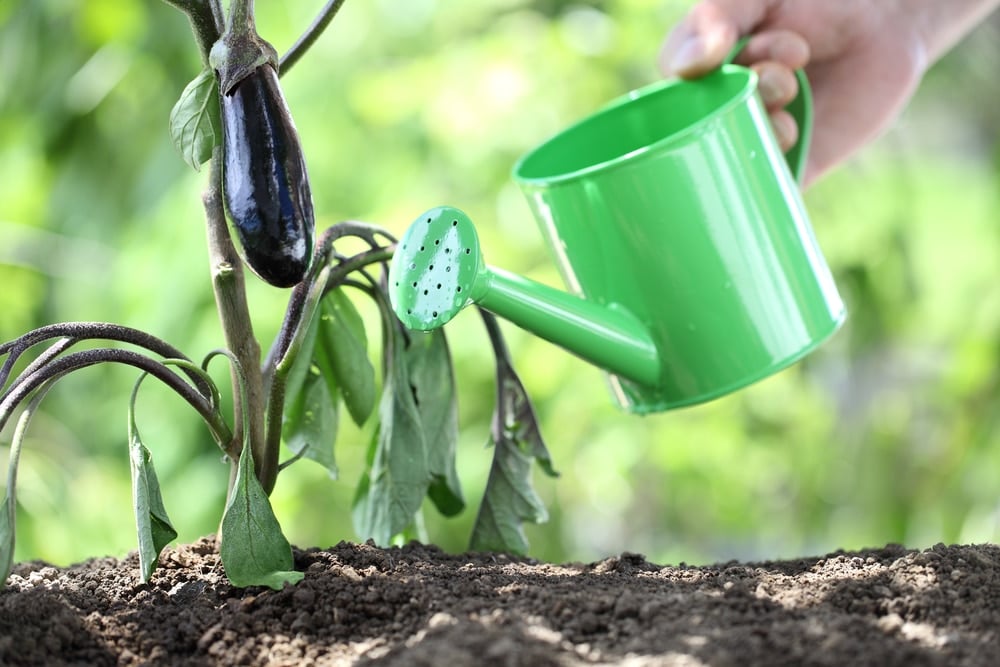
You must water the aubergine plant consistently and generously through the aubergine growing season. They need to be watered every day during the hot weather since they have a tendency to dry out quickly. Before watering the plant, check the soil down to a depth of 3-4 cm in order to determine if the soil is dry or moist. If you have your aubergines planted in containers, they get susceptible to drying out and may even require a little more watering. In case the leaves of the plant start to curl up or the plant starts wilting during the summer months, that’s a sign that the soil is not moist enough.
4. Feeding
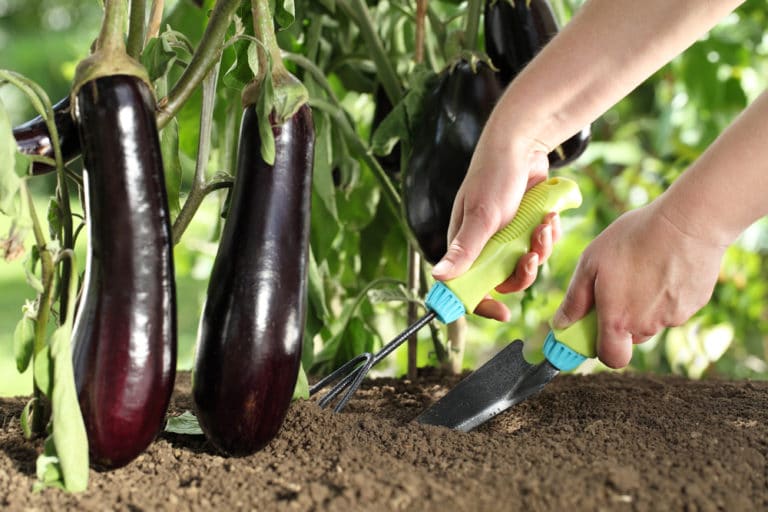
Feeding the plant with the right nutrients is key to growing fuller and plumper aubergines. The best way to ensure this is to grow them in rich, fertile soil. While sowing the seeds, you must use a low-nutrient and seed-sowing compost. When you replant young plants, you can use a multi-purpose compost along with a balanced fertiliser. When the plants are planted in their permanent positions or are well-established, start using a high-potash fertiliser as soon as you notice vegetables are starting to grow.
5. Pruning
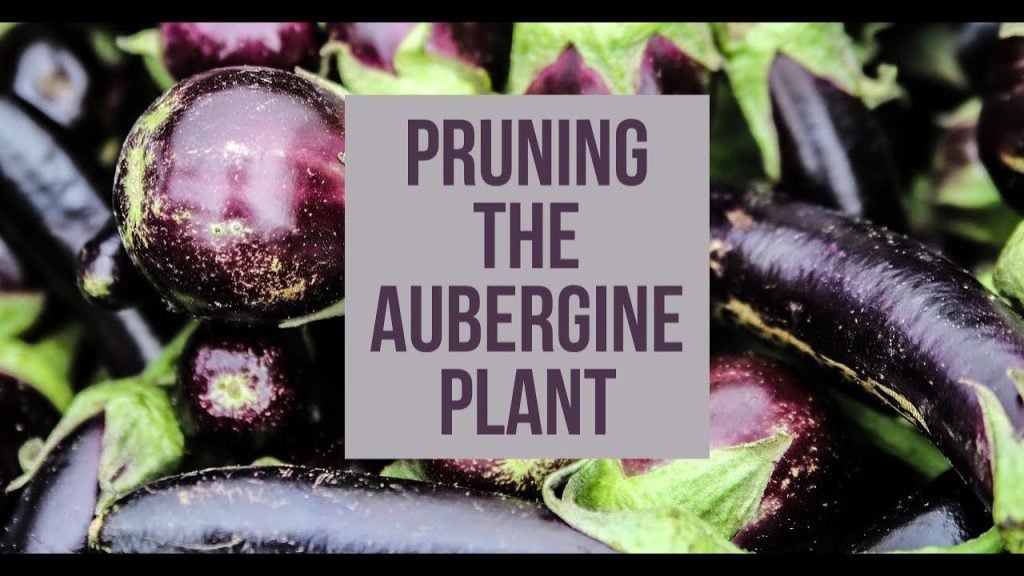
When it comes to aubergine growing, you may have to put some extra effort in the beginning, but once they get established, it becomes easy to grow them. Water them well, maintain healthy fruits, and cut off some leaves or flowers that show signs of infections at least two to three weeks prior to the first frost.
- To encourage new growth, it is recommended to pinch the first few flowers as soon as you see the buds coming through. This will encourage the plant to put some extra energy into growing strong stalks and deeper roots instead of producing new vegetables right away.
- Eliminate old leaves from the lower area of the plant in order to encourage high-quality fruits.
- Pull out the weeds as soon as you notice them.
- Pinch the new blossoms a month before winter arrives. This will encourage the plant to ripen existing fruit instead of putting energy into new growth.
- It is recommended to prune back to the lowest part of new growth during fall before the temperatures start falling.
6. Temperature and Humidity
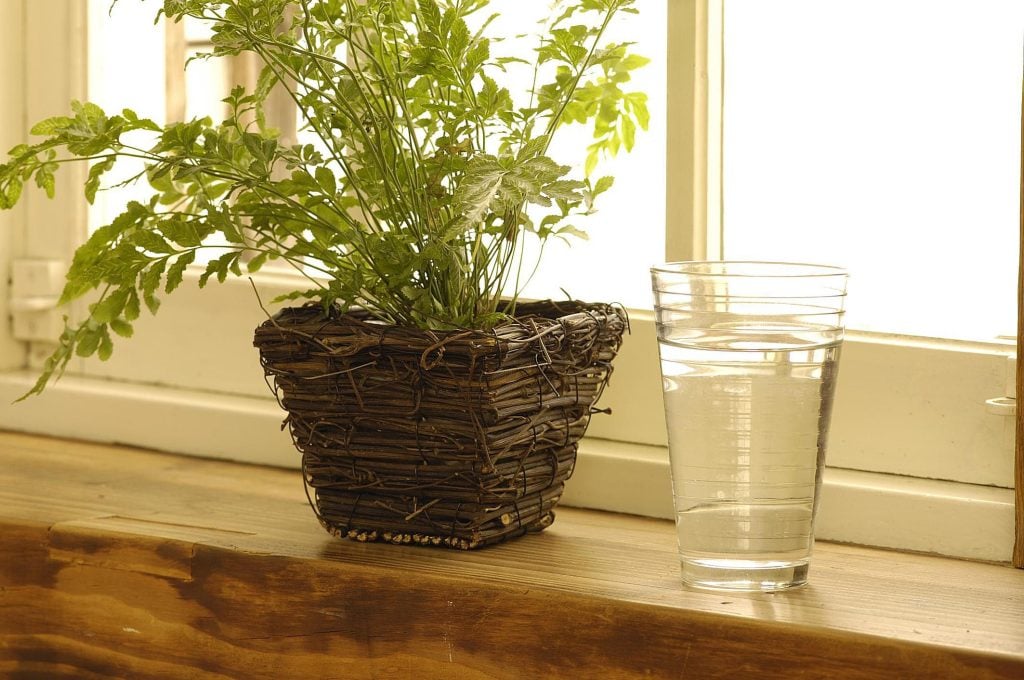
Aubergines are sensitive to cold temperatures. The best time to plant an aubergine is during spring when the temperature of the soil has touched 70 degrees Fahrenheit. These plants are healthiest and happiest when the temperature ranges between 70 and 85 degrees fahrenheit. Aubergines usually thrive well in hot and humid weather. However, a sticky and intense heat wave can cause a decline in pollination. These plants have a long growing season from July to October. In the Coastal South region, you might be able to plant aubergines in the garden from mid-spring to late summer. Aubergine is a tropical perennial; extremely hot temperatures can sometimes result in bitter-tasting vegetables.
7. Harvesting

You can usually start harvesting aubergines in August. Individual fruits can be plucked as soon as they grow to their full size and appear ripe and well-coloured. Mature aubergines have a uniform, vibrant colour. If you notice that the skin of the vegetable has become dull, it means that the vegetables are over-ripe and they might taste bitter. Harvest them regularly in order to encourage more yields. To check if the aubergine is ready for harvest, press your finger against its skin to check its firmness. Ripe aubergine shouldn’t be too mushy or soft. When harvesting aubergine, leave a short stem section attached to the fruit to prevent it from drying out.
8. Storing

Aubergines can be stored for a short duration since they have a tendency to dry out quickly. The ideal temperature for storing aubergines is 8 -12 degrees Celsius. The vegetable can stay in good condition for about two weeks. If you accidentally harvest aubergines while they are unripe, let them ripen for a few days in some warm spots so that the solanine breaks down. You can then store them in a cooler place. You can also store aubergines in the refrigerator, but ensure that the temperature doesn’t go below 8 degrees Celsius. Too low temperatures can lead to dark and sunken spots and can also cause cold damage. In case you have a surplus amount of aubergine produce and you wish to preserve them, you can freeze them. Raw or pre-cooked aubergines can also be frozen.
How to Freeze Aubergines?

Here are a few simple steps that you can use to freeze aubergines.
- Wash the aubergine thoroughly and peel it. Then cut them into 8mm thick slices.
- In a container, pour some water and bring it to a boil. Then add a little lemon juice to avoid browning.
- Blanch the aubergine slices in hot water for a couple of minutes and allow them to dry out for a while.
- You can then keep the aubergine slices in the freezer in a bag or a container. This way, you will be able to keep the aubergines fresh for a very long time.
Types Of Eggplants That You Can Grow In Your Garden

- Mid-Sized ‘Dancer’: This variety features pinkish-purple fruit in the shape of a cylinder. The plant is smaller in height, and it produces a good amount of vegetables through hot, humid summer months.
- Florida Market: This variety offers excellent flavour and fares really well during the long growing season. It bears large glossy purplish black eggplants that appear around 85 days after the plants are set out.
- Rosa Bianca: This variety bears globe-shaped purple eggplants with a white streak.
- Ghostbuster, Casper, Snowy: These varieties bear white eggplants.
- Kermit: This is a unique variety that bears cherry-tomato-sized white and green fruits.
Problems with the Aubergine Plants
The aubergine plants are prone to developing a few diseases if not taken care of. A few common ones include:
1. Bacterial Wilt
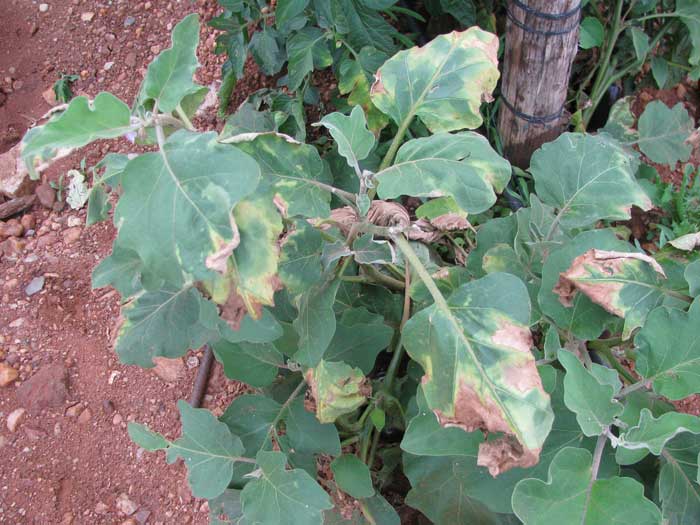
This is a serious bacterial disease. It leads to the sudden wilting of the aubergine plant. If the plant is suffering from this disease, it will start withering and die quickly. Other symptoms include the pith inside the stem turning reddish-brown and the leaves turning yellow. In order to avoid this disease, avoid planting eggplants in areas where there have been Irish potatoes, tomatoes, or eggplants planted in the last three years. Crop rotation is necessary to help avoid the buildup of soilborne pathogens.
2. Phomopsis Blight
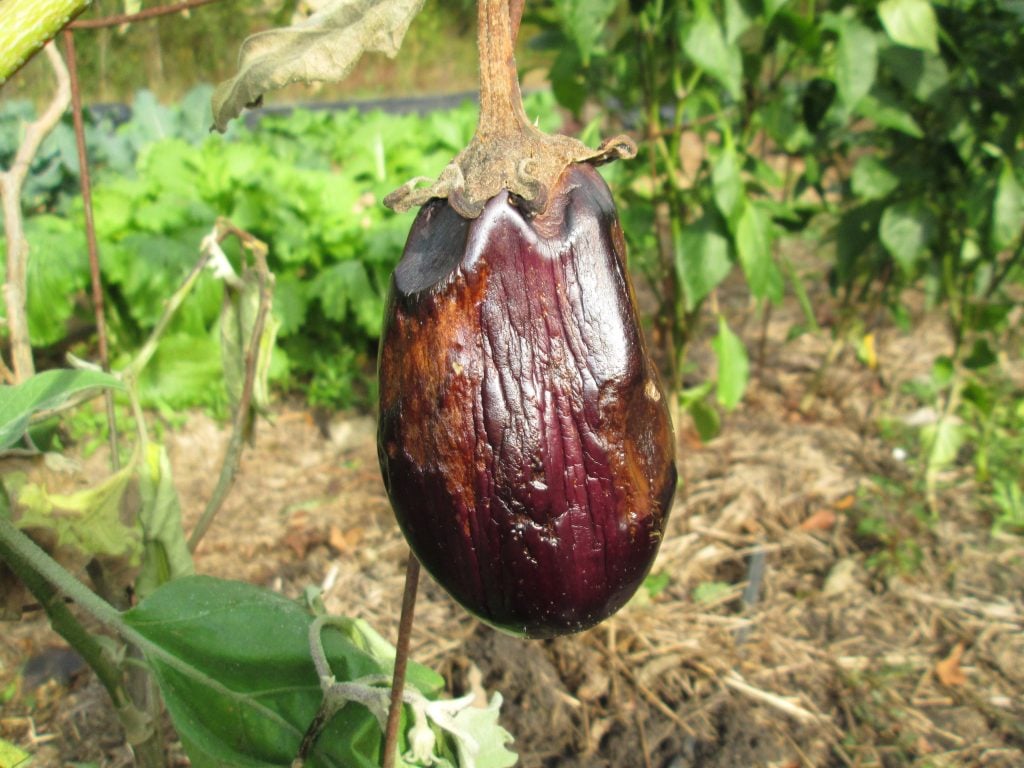
This is a fungal disease that usually directly attacks the vegetable. Sometimes, the stem can become narrower than normal and tear off around 1-2 inches above the soil. Leaves might also produce grey or brown spots that are oval or round shaped. Fruits start rotting and produce pale and sunken areas, which eventually enlarge and become spongy and soft down into the flesh.
3. Phytophthora Blight
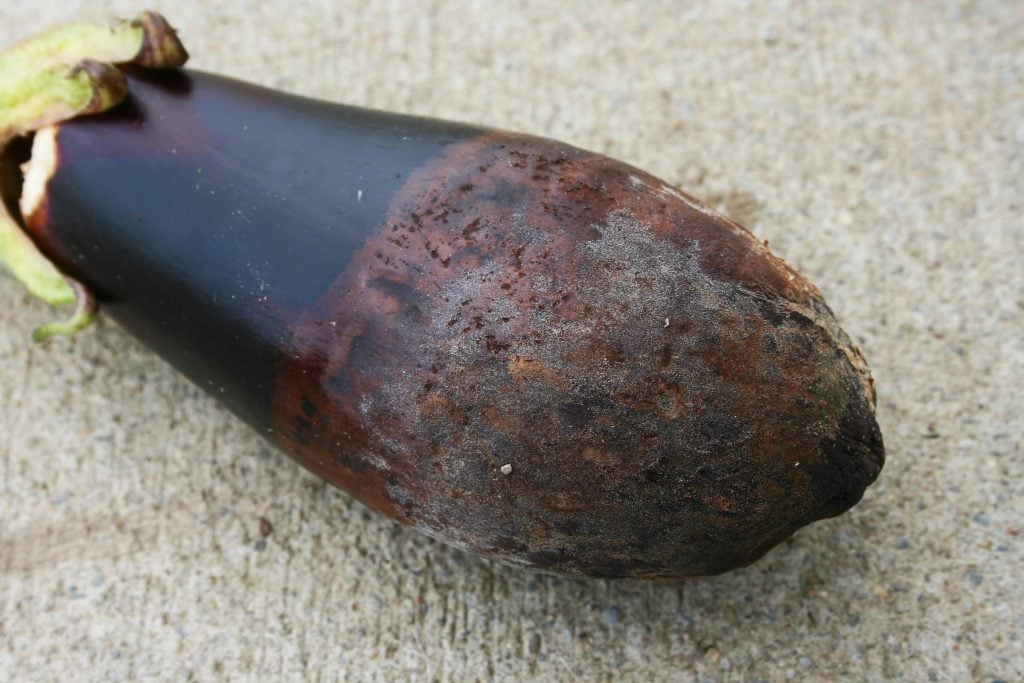
Phytophthora blight is a kind of water mould that attacks the roots of eggplants, stems, fruits, or leaves. Signs and symptoms include dark streaks on the plant’s upper branches and then rapid collapse of the entire plant to death. One of the most important things to keep in mind to avoid this disease is avoiding excessive moisture.
4. Southern Blight
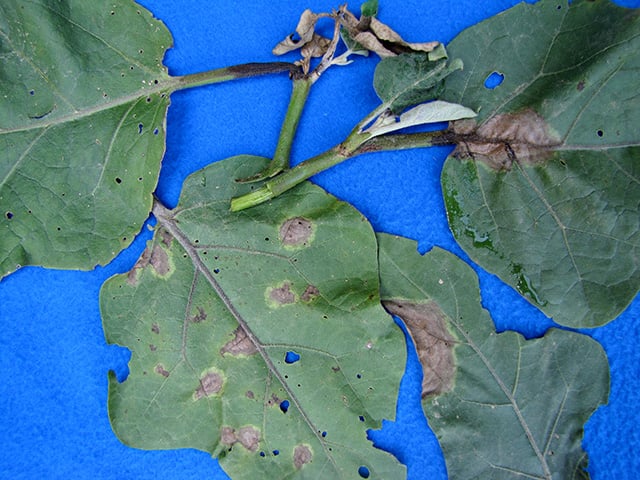
This is a disease that first appears at the soil surface. With disease progression, you will notice a white layer of fungal mycelium developing around the base of the stem. This causes the stem to rot entirely, and the plant turns yellow, wilts, and eventually dies. You will also notice little circular brown and tan pellets take shape and drop in the soil. To avoid this disease, avoid planting aubergines in areas where peppers, tomatoes, eggplants, or snap beans were planted in the past three years.
Conclusion
Aubergine plants need little care and maintenance once they are well-established. They need heavy feeding, rich soil, and hot, sunny conditions to thrive well.
Once you plant them successfully and take diligent care, you can look forward to a bountiful yield in summer. There are multiple varieties of aubergine that you can choose from. You can buy seeds from online suppliers or from garden centres.
The fruits produced can be baked, sauteed, grilled, or stir-fried to use in a variety of delicious recipes.
We hope this guide will help you grow aubergines in your garden successfully.
Frequently Asked Questions
Which Is the Best Place to Plant Aubergines?
Aubergine plants that are grown outdoors need fertile, well-draining soil. You can add a low-nutrient balanced fertiliser before planting. Aubergine plants thrive well in sunny spots and warm climates.
How Often Should You Water Aubergine?
Aubergines must be watered around 1 inch every week during the growing season. If the weather is very hot and humid, you might have to increase the amount of water you pour. You should monitor the moisture content of the soil by using a moist metre to ensure that the soil doesn’t become very dry in between the watering sessions.
How Long Does It Take for An Aubergine to Grow?
Aubergine takes some time to grow fully. They typically take anywhere between 80 and 90 days to grow from the seed. The vegetables on the plant produce beautiful colours when they appear and add some vibrancy and ornamental appeal.
What is the Best Month to Grow Aubergine?
If you’re planning to grow the plant indoors, plant the seeds between January and February or during May/June. If you’re planning to transplant outside, plant them between March and April or Mid-July to September.

![Learn How to Grow Leeks: From Seed to Harvesting [UK]](https://staging.thearches.co.uk/wp-content/uploads/How-To-Grow-Leeks-In-A-Vegetable-Garden.jpeg)
